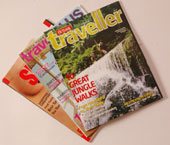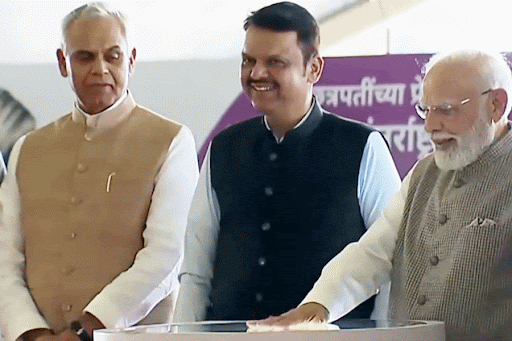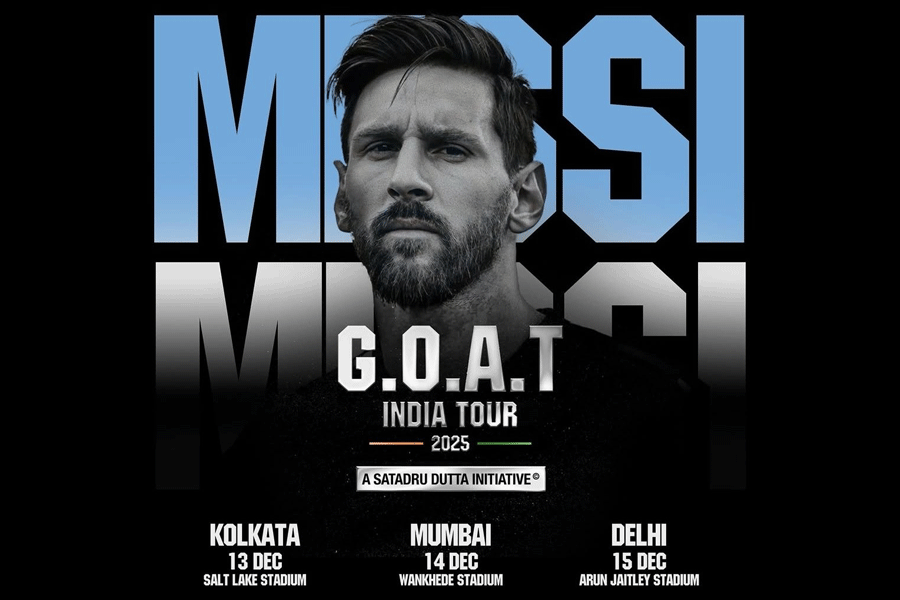 |
 |
| SURVIVAL KIT: News magazines have launched add-on products (above) to stay in the reckoning |
When was the last time you read a magazine in English or in any other Indian language? If you can’t remember, you are part of a larger trend. And if you can, you’re in a shrinking group, for every year lakhs of readers are kicking the habit of settling in with a magazine.
Sample some numbers. The latest National Readership Survey (NRS), the research that determines the number of newspaper and journal readers in the country, shows that the readership of magazines fell from 75 million in 2005 to 68 million in 2006. This year’s first round of research of the Indian Readership Survey (IRS, an NRS rival) also highlights a dip in the readership of several magazines.
That is not all. Audit Bureau of Circulation (ABC) data on the number of newspaper and magazine copies sold indicate that the circulation of several magazines is stagnating. And for this reason many journals have opted out of the ABC.
“Magazines are dying. Mass magazines will go out of business soon,” predicts Mudra Communications’ president Sandeep Vij. Advertising agency TBWA’s vice president Gopinath Menon too warns, “The magazine playing field is shrinking and shrinking fast.”
Clearly, India’s estimated Rs 550 crore magazine category is in trouble. The diminishing readership, especially of news magazines across languages, tells a grim story. According to the IRS, 2006, India Today (English) saw a 10 per cent drop in readership while Outlook (English) experienced an 11 per cent readership decline. The Outlook publisher Maheshwar Peri did not respond to The Telegraph’s queries, but India Today’s publishing director and CEO Ashish Bagga said that he’s contesting the NRS findings. “There are serious errors in the survey and NRS has promised to look into it. There should be a correction in the next round.”
Even the readership of special-interest journals is in decline. The IRS survey shows that film magazines such as Filmfare and Stardust are losing readers. Women’s titles are not doing any better. Cosmopolitan (from the India Today group) today has some 73,000 readers, down from over 80,000 in the NRS survey last year.
Admits Delhi Press’ publisher and editor-in-chief Paresh Nath: “Some of our magazines have lost 30 per cent of their readers over the years.” The country’s largest-read magazine, Saras Salil, a Delhi Press Hindi publication, has a readership of over 72 lakh (NRS 2006) compared with 75 lakh a couple of years ago.
Among the multiple reasons for the magazines’ woes is the fact that the category is sandwiched between newspapers and 24X7 television. While TV channels break news, newspapers offer analysis and cover entertainment. “There is no information need gap that the magazine really fills today,” says advertising agency Madison Media’s chief operating officer Basabdutta Chowdhuri.
Some, like Nath, hold the magazine industry responsible for its own affliction. To hook consumers, newspapers indulged in price wars and expanded the market, entered new territories, localised content, added pages and even went all-colour , But the magazine remained where it was. “We dawdled while the newspapers whizzed past us,” says Nath wryly.
Counters Ashish Bagga: “Magazines have re-invented themselves. We launched several add-on products. In fact the advertising growth rate in the category is 4 to 5 per cent higher than that in newspapers.” To be sure, the India Today group has launched several magazines including India Today Spice and India Today Home. “News magazines are rocking. Our circulation, marketshare and advertising revenues are up. Readership is the only blip which will be corrected in the next NRS,” he says.
Yet the advent of interactive and participatory media has compounded matters. The Internet meets a reader’s information needs on demand. The mobile is a highly interactive medium too — enabling a user to be a part of a television show with an sms or a call-in. A direct to home (DTH) connection gives people the power to click on whichever news they want to see. And blogging, christened the citizen’s media, is becoming a big-time phenomenon.
Not surprisingly, few have the time for magazines. According to NRS 2006, the time spent on magazines has fallen from an average of 42 to 40 minutes during weekdays and from 46 to 38 minutes on Sundays since 2005.
But despite all the bad news, magazine industry experts believe that the category can overcome its tribulations by going niche. On his website, Samir Husni, magazine expert and Chair of the journalism department at the University of Mississippi, writes: “Specialisation is the viable future of the industry… The new face of magazines will be heavily niche targeted titles that may never see more than 10,000 circulation.”
India may eventually get there as well. “International titles have seen this trend in the West and can sniff a similar pattern in India,” says media expert Meenakshi Madhvani. “Going by the size and potential of the country, they do not want to lose out on the first mover advantage, especially with eased foreign direct investment norms,” she adds.
Small surprise, then, that several Indian publishing houses are furiously hunting for foreign media partners to launch international titles. The India Today group has tied up with Harvard Business Review to launch its Indian edition. Celebrity magazine OK, Home & Garden, Maxim and Marie Claire have already been launched in India.
“The potential is awesome,” says Devashish Sarkar, head of The Times group and BBC magazines joint venture company which owns Femina and Filmfare, and launched the BBC auto magazine Top Gear about a year ago. “We will launch two more magazines before the end of the financial year,” promises Sarkar, who holds that there will be some 40 new titles in the market in the next five years.
In the developed markets, special interest magazines are often bigger than news magazines. A media research expert points out that the Ladies Home Journal sells 4.5 million copies in the US while Time sells 3 million. “There are 50 tennis magazines in the US, and it is not the most popular game in the country,” says the expert. The Malayala Manorama group’s senior general manager and deputy editor Jayant Mammen adds, “There is no danger to the magazine category but they are moving into specific interest areas,” he says.
Manorama has launched nearly 10 Malayalam magazines in the last four years, focusing on personal finance, health, women, children and so on. It has also started Man — a men’s magazine in English.
Content is changing, too, in an effort to hold reader interest. The State of the News Media, which is an annual report on American journalism produced by an institute affiliated to Columbia University, says in its 2006 paper that there is a “slow drift toward lighter fare” in magazines such as Time and Newsweek. Long reports on “hard topics”, it says, are losing out. Back in India, too, news magazines are looking more and more at social issues, focusing on subjects such as Bollywood, education, health, luxury good and teenage spending.
What’s important is that while magazine readership may be declining, the advertising market is growing. Media monitoring agency Adex figures show that magazine advertising grew by 15 per cent in 2005 over 2004. The general interest magazine got the maximum share of advertising.
Publishers are also looking at other avenues to keep their journals going. Some are experimenting with language editions of their core publications. Delhi Press, for instance, extended some of its Hindi and English titles into regional languages. “Language editions bring additional income as we use the same content and leverage the same distribution channels,” says Paresh Nath of Delhi Press. Despite the current low in the magazine business, Nath is confident that the tide will turn. “In the long run, magazines will make a huge comeback.” Adds Bagga: “Magazines are under no threat whatsoever.”
But Mudra’s Vij is not so sure. He believes that niche magazines will soon be overtaken by the Internet. “The magazine’s time is running out,” he concludes.











